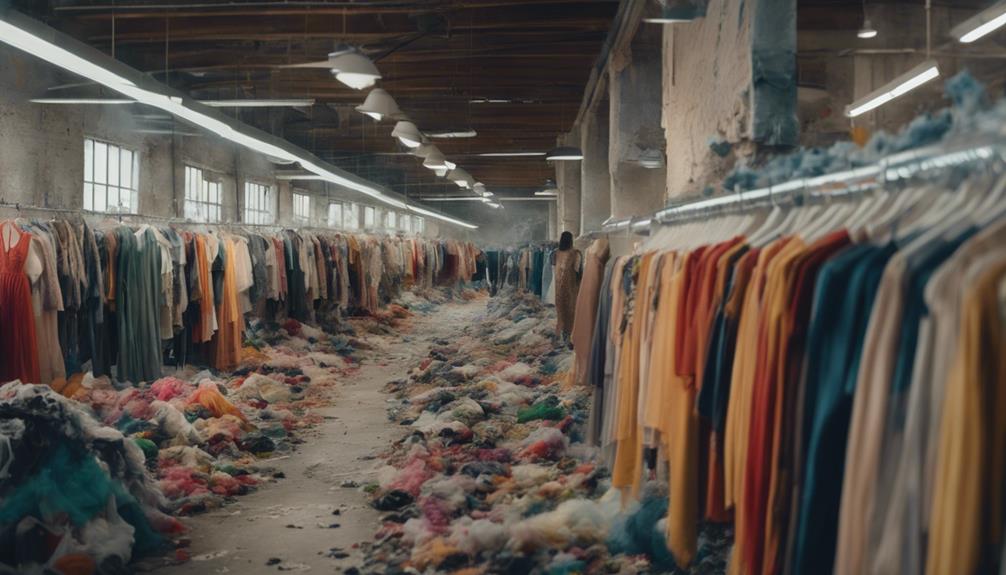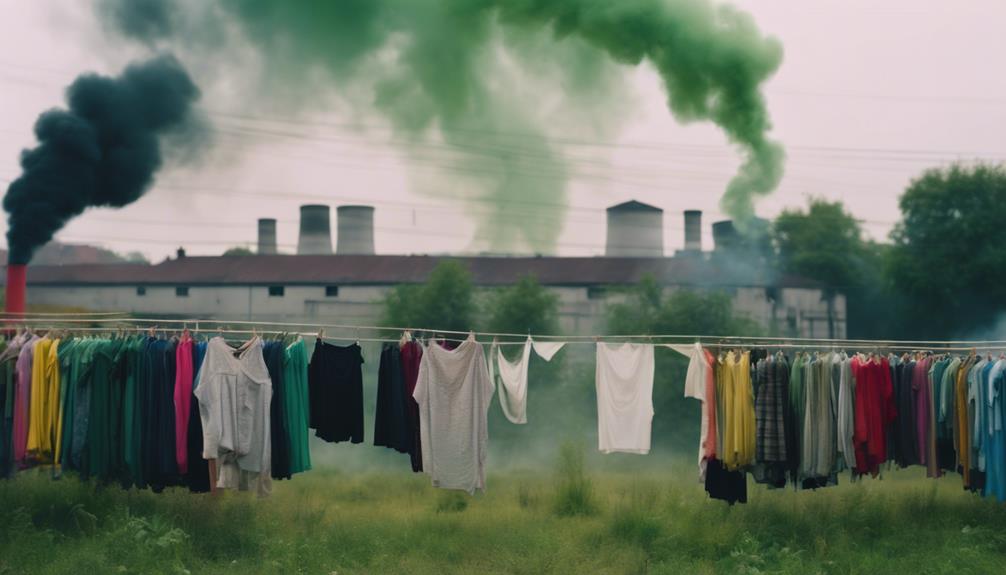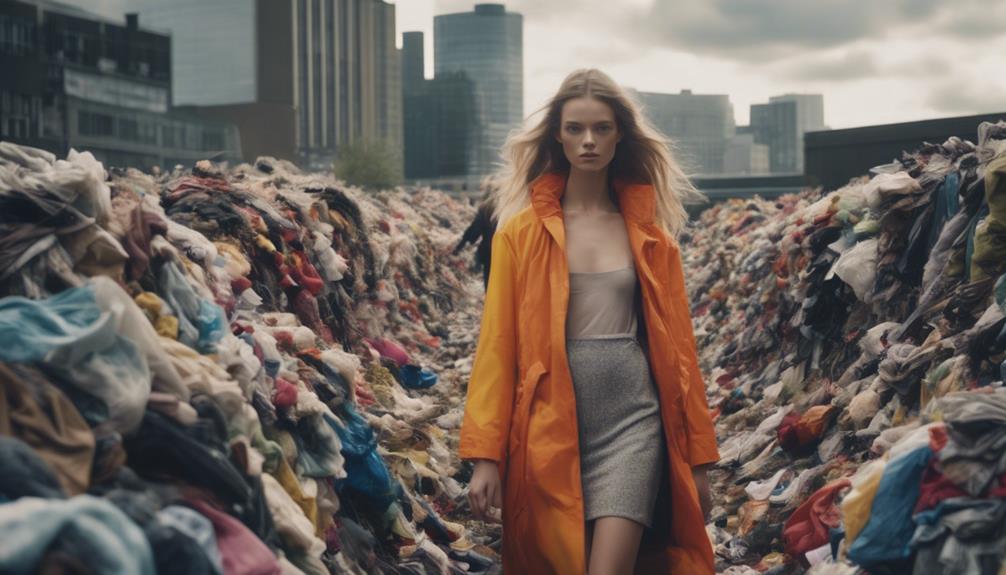Sustainable fashion faces various obstacles that hinder true progress. Deceptive claims regarding sustainability can be misleading, making it challenging to distinguish truly sustainable options. The absence of regulatory measures allows brands to exploit sustainability without consequences. Many recycling efforts fall short, achieving only a 1% recycling rate despite potential. Moreover, the allure of the fast-fashion industry often overshadows the push for sustainable alternatives. Recognizing these hurdles is essential, and delving deeper can provide more insights on navigating the intricate realm of sustainable fashion. The impact of sustainable fashion goes beyond environmental advantages, encompassing social and economic implications. Consumers play a vital role in fostering change by demanding transparency and responsibility from brands. By supporting ethical and sustainable practices, we can strive for a fashion industry that values both people and the planet. Understanding the effects of sustainable fashion empowers individuals to make informed decisions that contribute to a more conscientious and fair industry.
Key Takeaways
- Misleading sustainability claims by brands create confusion and foster a false sense of progress, hindering genuine consumer choices.
- The lack of regulatory oversight allows environmental degradation and greenwashing to persist without accountability.
- Consumer behavior conflicts with sustainability ideals, as affordability of fast fashion often outweighs eco-friendly choices.
- Limited availability and quality of sustainable fabrics restrict brands from offering truly eco-friendly options.
Industry Claims Vs. Reality
While the fashion industry touts its commitment to sustainability, the reality reveals a stark contrast between these claims and the ongoing environmental damage. You might think that sustainable fashion is on the rise, but the facts tell a different story. In the past 25 years, the environmental impact of this industry has barely budged, with a staggering 87% of garments ending up in landfills or incinerators.
Many brands market their products as sustainable, boasting about organic and carbon-positive materials; however, these items often contain non-biodegradable, petroleum-based components, undermining their ethical fashion claims. This misleading narrative creates a false sense of progress. The belief that sustainability exists on a spectrum allows companies to promote 'less unsustainable' practices without making genuine strides towards true sustainability.
Moreover, the lack of regulatory intervention means that companies face little accountability for their environmental impact. This absence of oversight perpetuates the industry's image of progress while sidestepping real responsibility.
You deserve transparency, and it's essential to recognize these barriers as you navigate the world of fashion, pushing for genuine change rather than accepting half-hearted measures.
Failed Innovations in Sustainability
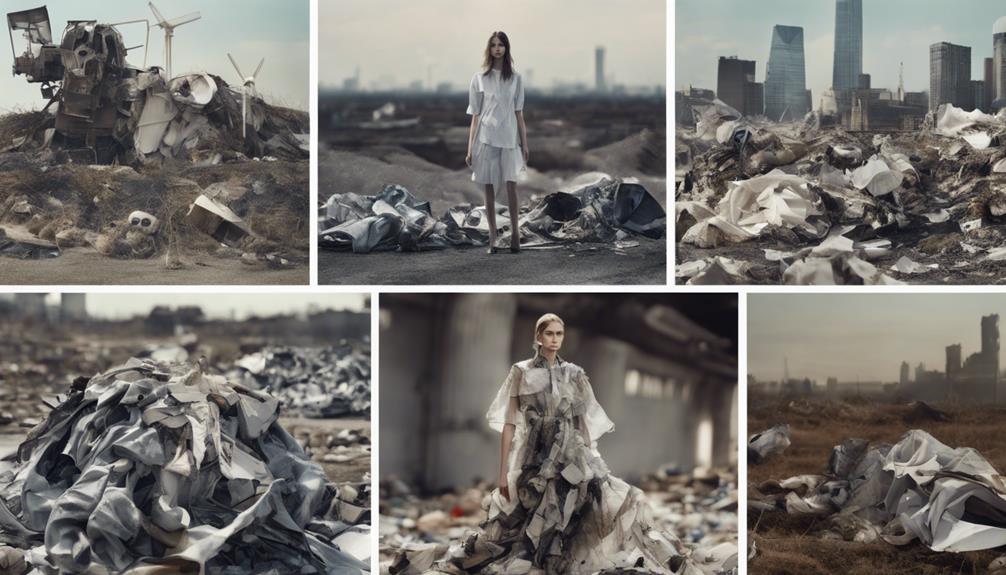
You might be surprised to learn that many recycling initiatives in fashion haven't made a real impact on sustainability.
While brands tout their eco-friendly innovations, the reality is that most products still rely on harmful materials and end up in landfills.
It's time to question these misleading claims and demand genuine solutions.
Ineffective Recycling Initiatives
Ineffective recycling initiatives have led to a staggering 87% of clothing materials ending up in landfills or incinerators, revealing the challenges facing sustainable fashion efforts. Despite the promotion of these recycling programs as sustainable solutions, only 1% of discarded clothing is recycled. This low percentage stems from inadequate infrastructure and poor consumer participation.
You might be surprised to learn that high-profile innovations like Rent-the-Runway have failed to greatly reduce the overall environmental impact of the fashion industry, further complicating the narrative around sustainability.
The fashion industry churns out about 80-100 billion new garments each year, contributing to massive textile waste management issues. This waste isn't just about excess fabric; it reflects a staggering loss—over $500 billion annually—due to clothing underutilization and ineffective recycling programs.
As an average consumer, you likely discard about 70 pounds of clothing each year without recycling, highlighting a critical gap in awareness and action. To truly embrace sustainable fashion, it's crucial to address these ineffective recycling initiatives and advocate for better systems that encourage responsible disposal and resource recovery.
Misleading Sustainability Claims
Misleading sustainability claims in the fashion industry create a false sense of progress, overshadowing the persistent environmental damage caused by non-biodegradable materials and inadequate recycling practices. Many brands market their products as carbon positive, organic, and vegan, yet the reality is that most items are still made from petroleum-based materials. This greatly contributes to the waste problem, with only 1% of discarded clothing being recycled.
The fashion industry's environmental impact hasn't improved over the past 25 years, despite high-profile innovations. The misconception that sustainability exists on a spectrum allows companies to promote 'less unsustainable' practices while ignoring the root causes of environmental degradation. Fast fashion brands often exploit this notion, leading consumers to believe they're making eco-friendly choices when they're not.
Moreover, the lack of regulatory oversight allows these misleading sustainability claims to proliferate without consequence. Without accountability, the journey toward genuine sustainability in fashion remains obstructed.
To make a real difference, you must scrutinize these claims and demand transparency from brands. Only then can you help steer the industry toward truly sustainable practices.
Need for Regulatory Action
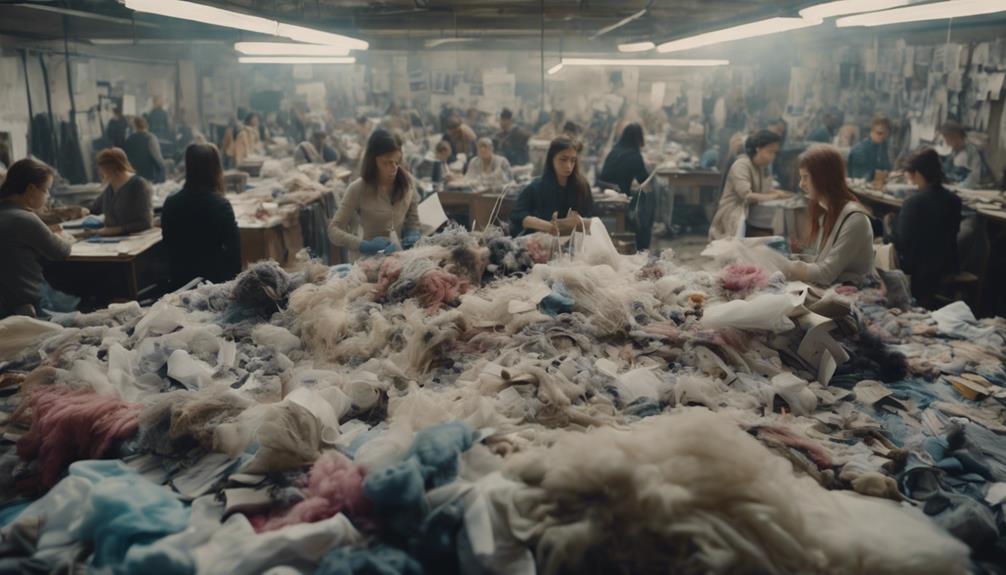
The fashion industry's lack of regulation allows environmental degradation and worker exploitation to flourish unchecked, highlighting the urgent need for government intervention. You might be aware that many companies operate within a complex supply chain that often prioritizes profit over ethical practices. This unregulated environment enables them to evade accountability for the significant environmental harm they inflict.
Market-based solutions and voluntary sustainability commitments simply aren't enough; they fail to address the scale of waste and pollution generated by the industry. Regulatory action is essential to enforce stricter standards that hold companies accountable for their environmental footprints. By implementing robust frameworks, governments can guarantee that businesses internalize the costs of their environmental damage, promoting a shift toward sustainable production methods.
Without such measures, the industry's seemingly progressive image doesn't translate into real accountability, leaving consumers susceptible to greenwashing and false sustainability claims. You deserve transparency in the fashion industry, and only through regulatory intervention can we hope to create a fairer, more responsible future. It's time for the government to step in and support sustainable practices that benefit both people and the planet.
Limitations of Business Models
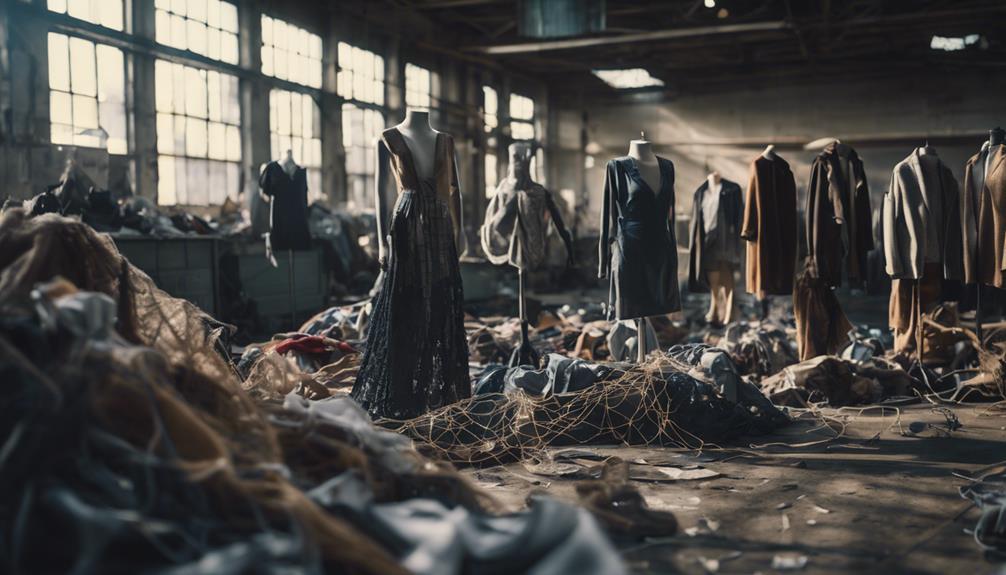
While regulatory action is essential for holding the fashion industry accountable, current business models in sustainable fashion often fall short of making a meaningful impact on environmental degradation. Many of these models, such as recycling, resale, rental, and repair, struggle to notably reduce the industry's environmental impact.
Here's a snapshot of the limitations:
| Business Model | Effectiveness | Challenges |
|---|---|---|
| Recycling | Only 1% recycled despite 95% recyclable | Poor consumer participation |
| Resale | Limited reach and awareness | Requires consumer willingness to engage |
| Rental | High operational costs | Not widely accepted for everyday wear |
| Repair | Often overlooked by consumers | Lack of infrastructure and accessibility |
| Sustainable Fabrics | Limited availability | Compromises on quality and longevity |
These business models often fail because they don't tackle the underlying causes of environmental degradation. Additionally, high manufacturing costs can make sustainable products unaffordable, and small businesses face notable hurdles in sourcing quality sustainable materials. Without addressing these constraints, the potential for meaningful change in sustainable fashion remains limited.
Systemic Change for Progress

Genuine progress in sustainable fashion demands that you view sustainability as a systemic issue, not just a collection of isolated fixes. The fashion industry churns out around 150 billion garments each year, with a staggering 87% ending up in landfills or incinerators. This alarming statistic underscores the urgent need for systemic change. Relying on 'less unsustainable' practices isn't enough; it merely masks the deeper issues driving environmental degradation.
Collaboration across the industry is essential. When brands, manufacturers, and consumers work together, they can tackle the root causes of waste and promote circular fashion. By designing garments that can be reused, repaired, or recycled, you can help create a sustainable ecosystem that reduces the reliance on new resources.
Consumer education plays a significant role, too. The more you learn about the true impacts of your fashion choices, the more you can demand change. Informed purchasing decisions can pressure brands to adopt sustainable practices, ultimately contributing to a fashion industry that values sustainability.
Embrace this systemic view, and be part of the movement that transforms fashion for the better.
Environmental Impact Overview
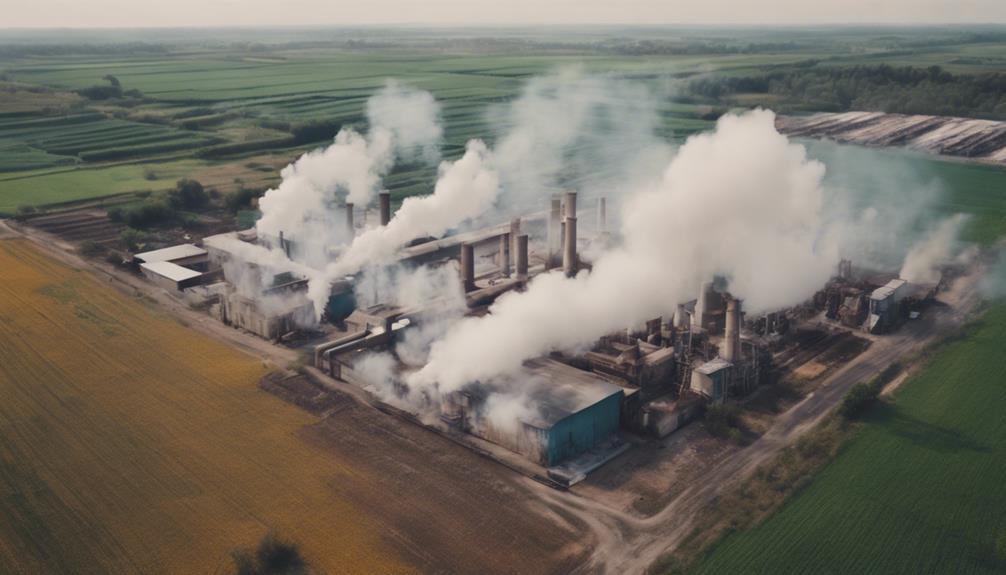
Fashion's environmental impact is staggering, accounting for about 10% of global greenhouse gas emissions and ranking as the third-largest polluter worldwide.
Every year, the industry churns out 80-100 billion new garments, but shockingly, 87% of these materials end up in landfills or are incinerated. You mightn't realize that nearly 20% of global wastewater comes from fashion, with textile dyeing being the second-largest contributor to water pollution.
The production process is equally alarming, using around 43 million tons of chemicals annually, which leads to significant environmental degradation. With only 1% of discarded clothing actually being recycled, the potential for sustainability is largely untapped. Despite 95% of textiles being recyclable, this underutilization results in over $500 billion in lost value each year.
As you consider your own fashion choices, think about the environmental impact of new purchases versus opting for used clothing. By shifting your mindset and embracing second-hand options, you can help reduce waste and greenhouse gas emissions, contributing to a more sustainable future.
Education and Awareness

Understanding the importance of sustainable fashion is essential for making informed choices that positively impact the environment. As a consumer, your awareness of sustainable practices can greatly influence your shopping habits. Unfortunately, many people lack the necessary education about the fashion industry's impact, leading to misconceptions and poor choices.
To improve your understanding, consider focusing on these key areas:
- Sustainability Statistics: Know that 71% of millennials prioritize sustainability but often lack knowledge about their choices.
- Recycling Awareness: Less than 1% of clothing materials are recycled, yet many consumers remain oblivious to this fact.
- Waste Management: The average consumer discards 70 pounds of clothing annually, highlighting a gap in understanding recycling's importance.
Consumer Behavior Challenges

Many consumers struggle with balancing the desire for sustainable fashion with the allure of fast fashion's affordability and trendiness. This conflict stems from a disposable clothing mentality, where around 60% of clothing items end up in landfills or incinerators within a year. You might find yourself discarding nearly 70 pounds of clothing annually, contributing to the 148 million tons of fashion waste expected by 2030.
Even though 71% of millennials prioritize sustainability in shopping, many still choose low-cost, trendy options due to price sensitivity. This choice often leads to a preference for low-quality apparel, which not only has a shorter lifespan but also exacerbates waste issues.
To shift your consumer behavior towards sustainable practices, it's essential to increase your awareness of the environmental impact of fast fashion. Understanding the benefits of investing in durable, eco-friendly clothing can help align your values with your purchasing decisions.
The Role of Thrift Stores
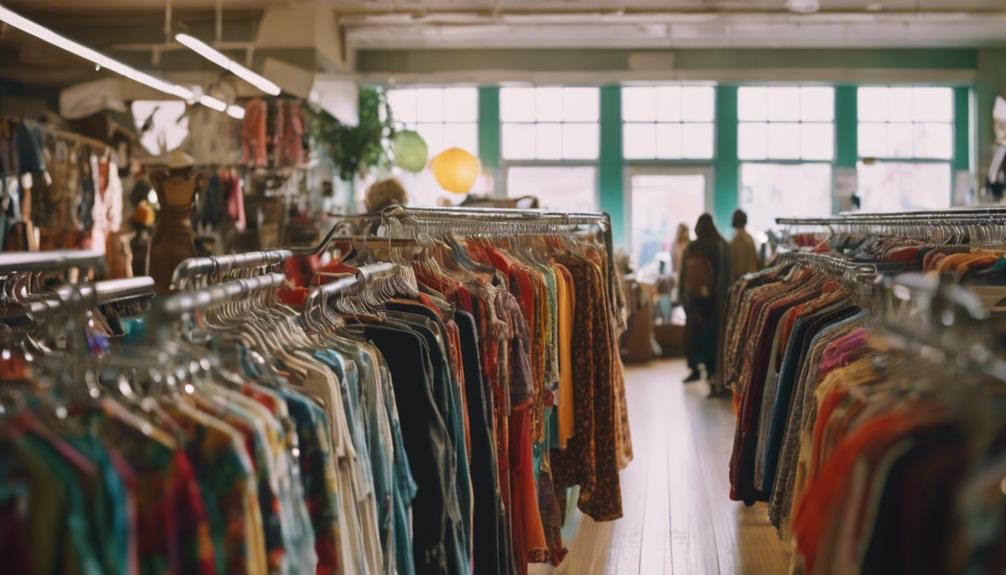
Thrift stores offer a sustainable solution to the fashion industry's waste problem by providing a platform for secondhand clothing that extends the lifecycle of garments. By shopping at thrift stores, you contribute to reducing the staggering amount of waste generated by the fashion industry—over 150 billion garments each year.
Here are some key benefits of thrift stores:
- Reduce Waste: Thrift stores help divert clothing from landfills, where approximately 60% of items end up within a year.
- Community Impact: They often serve as community hubs, raising awareness about fashion waste and promoting sustainable shopping practices.
- Growing Market: The secondhand apparel market is expected to surge from $96 billion in 2021 to $218 billion by 2026, highlighting increasing consumer interest in sustainable alternatives.
Future Directions for Fashion

The future of fashion is shifting towards sustainability, as consumers and brands alike embrace innovative practices that prioritize eco-friendly materials and circular fashion principles.
You're likely to notice a significant rise in the secondhand apparel market, projected to grow from $96 billion in 2021 to $218 billion by 2026. This shift reflects a broader trend towards sustainable practices, as more people choose to buy pre-loved items instead of new ones.
While circular fashion principles, which promote reuse, repair, and recycling, are gaining traction, the current recycling rate for textiles is only 1% despite 95% being recyclable. This indicates a pressing need for systemic change.
You can expect innovations in materials and production processes to enhance eco-friendly fashion options, driven by your increasing demand for sustainability.
Collaboration between brands and consumers is also on the rise, fostering a collective approach to sustainability. This could reshape industry standards and practices, pushing the fashion world toward a greener future.
If we don't act now, the fashion industry could consume 26% of the carbon budget by 2050, underscoring the urgency for change.
Embrace the future of fashion—it's time to prioritize sustainability.
Frequently Asked Questions
What Are the Barriers to Sustainable Fashion?
When considering sustainable fashion, you'll often find higher prices, limited styles, and complex supply chains. Plus, fast fashion's disposable mindset and widespread greenwashing can confuse you, making it tough to choose truly eco-friendly options.
What Is the Problem With Sustainable Fashion?
The problem with sustainable fashion is its accessibility. High prices deter many consumers, while greenwashing creates confusion about eco-friendly brands. Additionally, fast fashion's allure makes it tough for you to prioritize sustainable choices in your wardrobe.
What Are the Barriers to Being More Sustainable?
You'd think going green would be easy, right? Yet, you face high costs, confusing greenwashing, limited styles, and a culture that glorifies disposability, all while trying to make more sustainable choices in your wardrobe.
What Are the Factors Affecting Sustainable Fashion?
When considering factors affecting sustainable fashion, you'll find production costs, style variety, and consumer habits play significant roles. Your choices, influenced by trends and convenience, directly impact the industry's ability to become more sustainable.
Conclusion
In the quest for a greener garment globe, you must push past the pitfalls of profit-driven practices and prioritize planet-friendly principles.
By promoting education and embracing eco-conscious choices, you can transform the tides of fashion toward sustainability.
Support thrift stores and seek systemic change, and together, we'll stitch a sustainable future.
Let's turn the tide on trends, weaving wonder with wisdom, and create a mesmerizing, conscious clothing culture that champions the earth.
